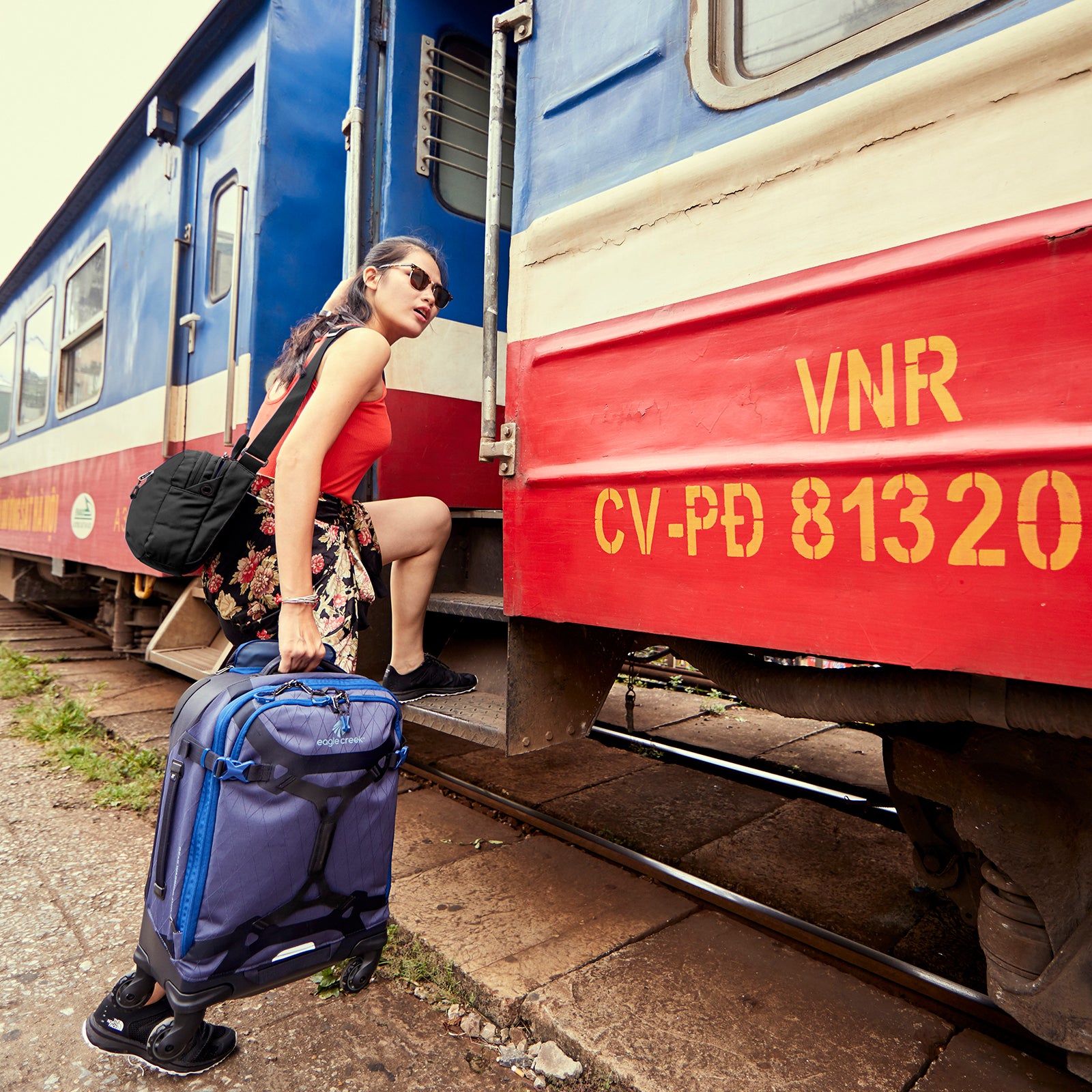I got my first Eagle Creek suitcase, an older version of the most recent model, the ($379), 12 years ago, as a going-to-college gift from my parents. The folks at the specialty where I worked at the time recommended it as a quality bag that would last a lifetime. As a gearhead (and naive teen), I wasn’t particularly stoked—a suitcase didn’t excite me the way a new rock-climbing harness or backpacking stove did. But that humble bag has become one of my go-to pieces of gear.
Since using it to move into my college dorm, I have taken the Tarmac on every trip that required a large suitcase. There’s no other outdoor item I own—aside from my 2003 Toyota Tundra, high-end , and North Face duffel—that has gotten as much wear and tear and held up as well.
That same quality extends across the brand’s entire line. My whole family, including my in-laws, are Eagle Creek converts—we look like an ad when we travel together. My wife has had her Tarmac for just as long as I’ve had mine and dragged it across several continents. I’ve also purchased several other pieces—including the smaller ($319) and several —that have yet to fail me.
The Tarmac’s longevity comes down to its construction. Most of its body, for example, is made from 1,000-denier polyester weave, a highly abrasion-resistant material, and Bi-Tech, a type of fabric with a polyurethane coating that makes it both durable and water-resistant. High-wear areas like corners use the brand’s heavier-duty Bi-Tech Armor, a beefed-up laminated polyester. Aside from a few scuffs here and there, my bag looks and functions nearly as well as the day I got it, even after minimal maintenance.
Eagle Creek keeps its designs simple. My Tarmac has a few exterior and interior pockets for separating toiletries and dirty clothes, plus internal compression straps and lockable zippers, both of which have yet to break. My favorite feature, though, is the oversize wheels, a trademark of Eagle Creek roller bags. They’re bigger and burlier than those on any other suitcase I’ve used and haven’t faltered after being dragged over countless cobblestone streets and dirt roads. Other than the addition of a nifty “coat keeper” bungee on the top and a strap for attaching a smaller piece of luggage to the front, the current Tarmac model is practically the same bag I got all those years ago—a testament to the effectiveness of the original design.
The only downside, if you could call it that, is its price point. There’s no getting around the fact that $379 is a lot to spend on a suitcase, but I reckon that by now I’d have bought at least three others if my parents hadn’t gifted me the Tarmac all those years ago. If something does break, Eagle Creek has one of the best I’ve seen in the outdoor industry, with repair or replacement for any failures, regardless of the cause, for life. It’s a testament to investing in high-quality items that last, and that’s better for your wallet—and the planet—in the long run.


